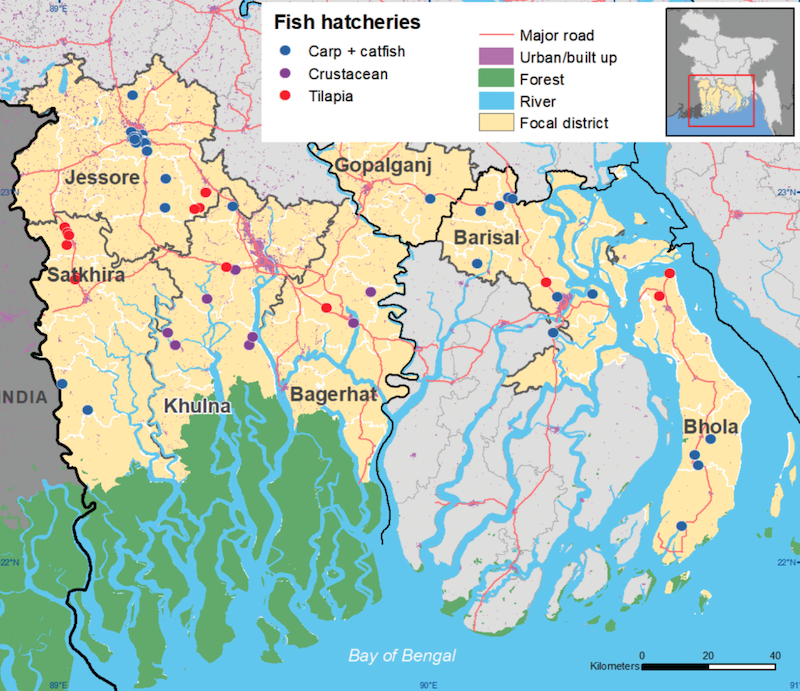
Authors: Hazrat Ali, Ben Belton, Mohammad Mahfujul Haque, Khondker Murshed-e-Jahan, and Liz Ignowski
Introduction: Seed production has experienced significant growth in Bangladesh over the last decade, driven by the increasing number of hatcheries. The hatchery segment plays a crucial role in the overall growth and development of aquaculture in the country. Understanding its structure, conduct, and performance is essential for assessing its impact on the productivity and profitability of aquaculture farms. However, there is a limited number of methodologically rigorous studies focusing on the hatchery segment in Bangladesh. The study aimed to fill the gap in the existing literature by conducting a methodological analysis of the hatchery segment of the aquaculture value chain in Bangladesh.
Methods: This study was conducted in seven of the main aquaculture-producing districts in southern Bangladesh. A comprehensive structured survey was conducted between May and August 2022 with 66 enterprises, including 42 carp+catfish, 16 tilapia, and 8 crustacean hatcheries.
Results and discussion: The major findings and their implications are as follows. (1) The number of hatcheries increased by 15% over the past decade, with a 27% increase in fish hatcheries and a 47% decrease in crustacean hatcheries. (2) Carp and tiger shrimp were the most commonly produced fish and crustacean seeds, contributing 67% and 99% of volume and 66% and 97% of sales value, respectively. (3) The hatcheries were family-owned and operated enterprises and generated a total of 2,491 full-time equivalent (FTE) jobs. (4) Hatcheries used 86% of their broodstock annually and replaced them regularly for improving quality and avoiding inbreeding. (5) 18% of hatcheries reported facing diseases and/or water quality problems, but the mean economic loss was only 0.71% of seed sales value, which is a low level of loss and waste. (6) Average annual net profit margin was relatively modest, averaging 54% of the gross revenue, which suggests the existence of competitive seed production and marketing. The results showed that the hatchery segment in southern Bangladesh appears to be dynamic, well-developed, efficient, and relatively competitive.
Read the full publication at https://doi.org/10.3389/faquc.2023.1219458.
Published July 19, 2023

